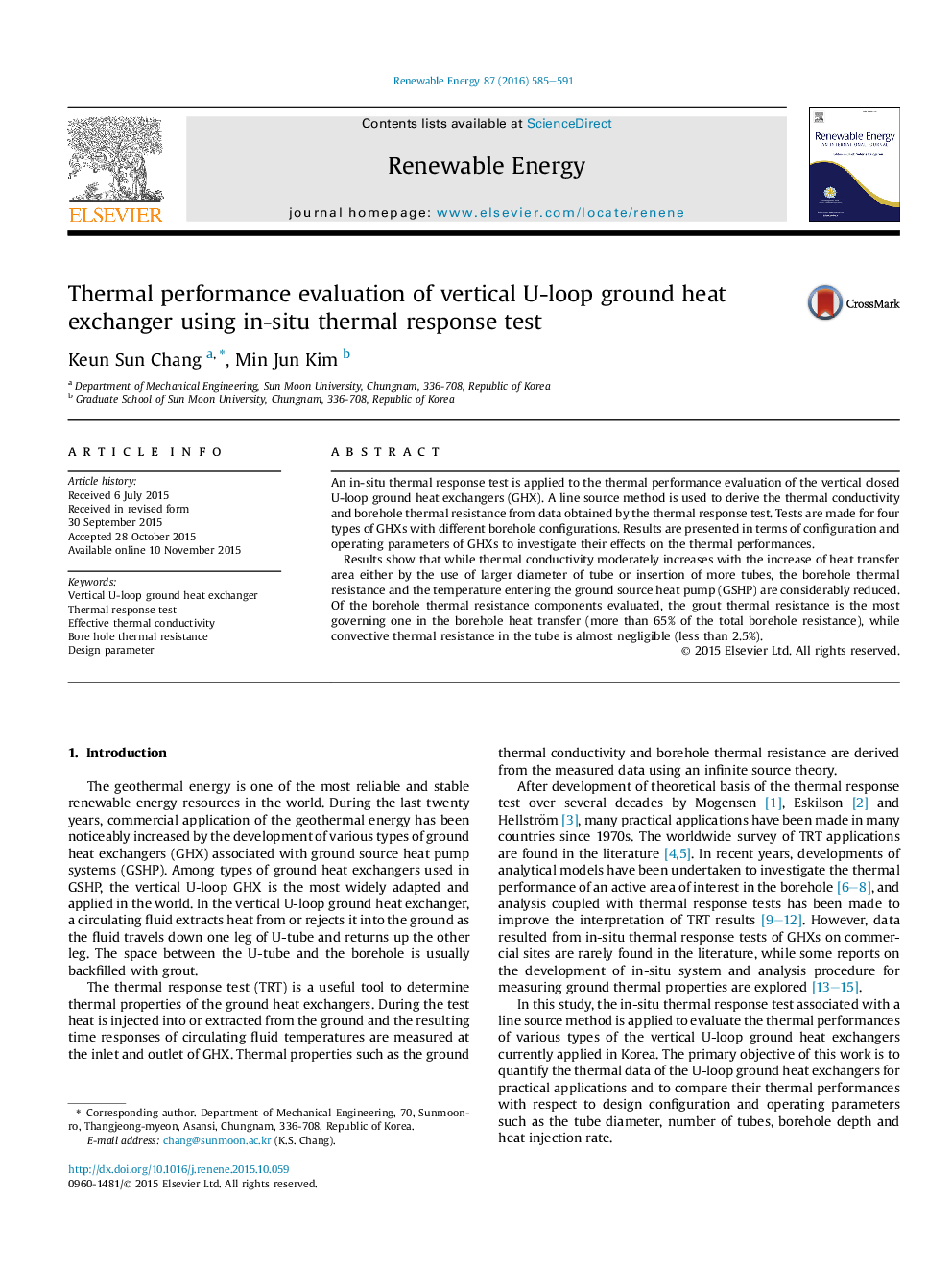| Article ID | Journal | Published Year | Pages | File Type |
|---|---|---|---|---|
| 10293999 | Renewable Energy | 2016 | 7 Pages |
Abstract
Results show that while thermal conductivity moderately increases with the increase of heat transfer area either by the use of larger diameter of tube or insertion of more tubes, the borehole thermal resistance and the temperature entering the ground source heat pump (GSHP) are considerably reduced. Of the borehole thermal resistance components evaluated, the grout thermal resistance is the most governing one in the borehole heat transfer (more than 65% of the total borehole resistance), while convective thermal resistance in the tube is almost negligible (less than 2.5%).
Related Topics
Physical Sciences and Engineering
Energy
Renewable Energy, Sustainability and the Environment
Authors
Keun Sun Chang, Min Jun Kim,
